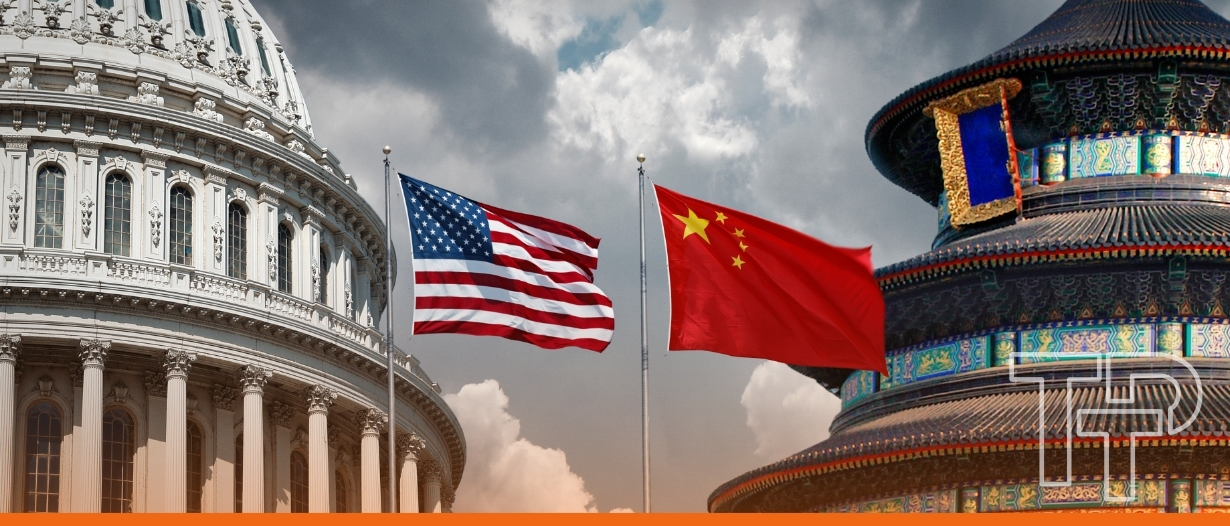- Trade Treasury Payments | The Liquidity Brief
- Posts
- TTP | Issue 02
TTP | Issue 02
Curb your Monday blues with our liquidity brief. The only newsletter in liquidity and risk management that you need to subscribe to. For the hustler, the CEO, the intern, the MD. Prepare for your week ahead, with the biggest voices, heavyweight leaders, and the meaningful conversations in trade, treasury, and payments. No spin, no bias, no gatekeeping—just honest, high-value insights.

🌟 Editor's note
Welcome to our second newsletter! It’s a busy week for us at Trade Treasury Payments HQ, with a lot going on in the world too. Here’s our breakdown of the top stories, highlights and important notes in this short digest.

But first of all, an invitation. We’re excited to invite you to a special gathering at Trade Treasury Payments (TTP) — a rooftop Open House to mark the launch of our new media platform and HQ in East London.
The Open House will take place at Second Home Spitalfields, in our vibrant rooftop space just off Brick Lane. This will be a drop-in style event — a chance to meet the TTP editorial and insights team, tour the new space, connect with others across the sector, or even record a short podcast or interview with us in the studio.
We’ll also have light lunch and refreshments available, and plenty of breakout spaces and meeting rooms if you’d like to catch up more privately.
When: Wednesday 30 April 2025, 10:30AM–2:30PM
Where: Second Home Spitalfields, 68 Hanbury Street, London E1 5JL
Event link & details: Register here
We’d love to welcome you. Let me know if you’re planning to come by — and feel free to bring a colleague or contact you think would enjoy the space and conversation.
Skip to your favourite part
Slow read
Let’s face it — all good things must come to an end.
In an era of automation, many familiar roles, products, and services have ridden off into the sunset. The Yellow Pages. Cashiers (at least the human kind). DVDs. Film cameras. All but gone. We could debate the speed and quality of it all, but the point is, change happens. And it’s happening now in the banking industry, where we’re seeing the end of the era for traditional transaction fee models.
Of course, this is a bit of a taboo topic, one many of my colleagues tend to avoid. But as those who know me will acknowledge, I rarely shy away from topics that drive transparency and inclusiveness. Recently, I discussed this and other topics moving our payments world in Going Boldly – The 2025 Top 5 in Payments and the Dark Mirror: Bold Predictions That Virtually No Banking Professional Will Say Out Loud. Pricing models, while delicate, include the challenges banks face today around transaction fees.
The real question is whether improved transparency is enough on its own, or if something deeper needs to change in how banks think about payments pricing?
P × V: Still the centre of the storm
Price-times-volume (P × V) has long been the corporate transaction fee model across most regions, with Asia Pacific being a notable exception due to its diverse currency and market structures. Years of low interest rates conditioned banks to depend on fees as a core revenue stream. That era has ended, and with it, the luxury of inertia. Many bankers, especially those newer to the industry, have only ever known a fee-driven environment. But for those who’ve been through full market cycles, we know that what’s “normal” has always been fluid.
It's important to note that while the P × V model is under pressure, we should not be too quick to assume it’s headed for extinction. What if, instead of collapsing, it’s simply being reshaped?
P × V sits at the centre of a much broader conversation. It’s the base unit, the DNA of how banking runs. And when external forces start to pull on it — tariffs, supply chain disruptions, market volatility — the entire system can start to unravel. But that doesn’t mean it disappears. More likely, it evolves.
Some industry voices have declared the end of P × V as we know it. Gird your loins, the end is nye! But maybe not. Maybe this is a transition to a hybrid era, where P x V still plays a central role, just within a new framework of performance and value alignment.
A new era of volume, value, and velocity
Thanks to real-time payments (RTP), distributed ledger technology, artificial intelligence (AI), and the rise of micropayments, corporates are pushing back on legacy pricing models. The sheer volume of transactions is exploding, but that doesn't mean banks should continue pricing them the way they did in the past.
Trade digest
Treasury digest
Payments digest
🗓️ Upcoming events
Trade Treasury Payments’ Open House TTP’s unofficial launch reception. You’re all invited to our open house. See the studio, mingle with the community. Just cool treasury and trade vibes. Right in London’s curry mile.
| BAFT Global Annual Meeting Three days of insights from leading voices in banking, compliance, trade, and payments. TTP’s Carter Hoffman will be attending. Grab a coffee with him here.
|
The 2025 Payments Canada SUMMIT ‘Innovate. Collaborate. Transform.’ exploring the future of payments globally and in Canada. TTP’s Carter Hoffman will be attending. Grab a coffee with him here.
| Commodity Trading Week Europe Explore the intricate details and evolving complexities of the commodity trading landscape. TTP’s Deepesh Patel will be speaking.
|
2025 EBRD TFP Information Session and Awards Ceremony TTP’s Deepesh Patel will be speaking at the EBRD Trade Facilitation Programme Information Session and Awards Ceremony.
| ICC DSI x TTP Tradetech Roundtable Join ICC Digital Standards Initiative’s Managing Director at a Tradetech leaders roundtable in London.
|
Multimedia from Trade Treasury Payments
Podcasts
🚀 Our latest edition
Our top picks this week
🦄 Company spotlight
Finverity — Bridging the working capital gap in emerging markets
A rising player in the open account finance space, Finverity is creating the infrastructure amongst local and regional banks to offer Open Account & Supply Chain Finance across EMEA and linking them to corporates to enable better SCF funding flows.
The backstory: Co-founded in London (like us), Finverity empowers mid-sized banks and corporates to structure, implement and operate a wide range of open account finance products. Their mission? Make supply chain finance more accessible, efficient, and transparent.
Key innovation: FinverityOS—a white-label, end-to-end SaaS platform—enables banks and non-bank financiers to digitise supply chain finance and working capital products, including payables, receivables, distributor finance, and now Islamic finance, PO finance, inventory finance, and trade loans. A built-in “create a deal” tool lets users design their own funding structures with ease, while AI Agents automate the most tedious of tasks like mass onboarding of suppliers.
Traction: Finverity is growing its presence across EMEA and attracting top talent, including execs from Demica, Aronova, and Starling Bank, to drive its next phase of growth. The firm’s hybrid model of technology + funding is resonating with institutions looking to scale in frontier markets. Check out Finverity
🏆 Move of the week
 | Merisa Lee Gimpel: Neobank superstar🌉 Background: A standout in digital trade, Merisa built her reputation leading innovation at Lloyds Bank, where she focused on reimagining customer experience in trade finance. 👑 The move: She’s now Head of Supply Chain Finance at Revolut, as the fintech giant deepens its push into SME finance. With neobanks reshaping the landscape, this is one to watch. 🙈 Quirk: She brings a strong CX lens to trade. |
Did You Know? In 2000, liquid bulk (primarily oil) made up 29% of global seaborne volume. By 2023, that figure had declined to 18%, as dry cargo (including raw materials and manufactured goods) has grown to account for 36%.
Till next time,













